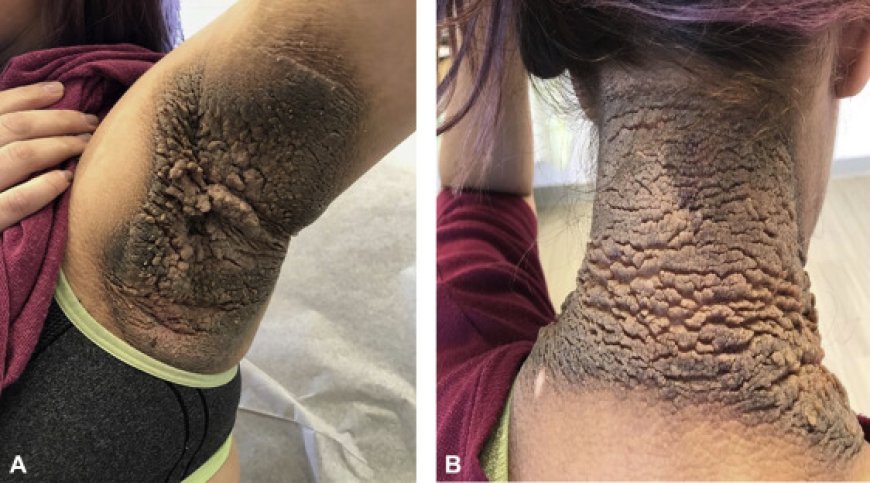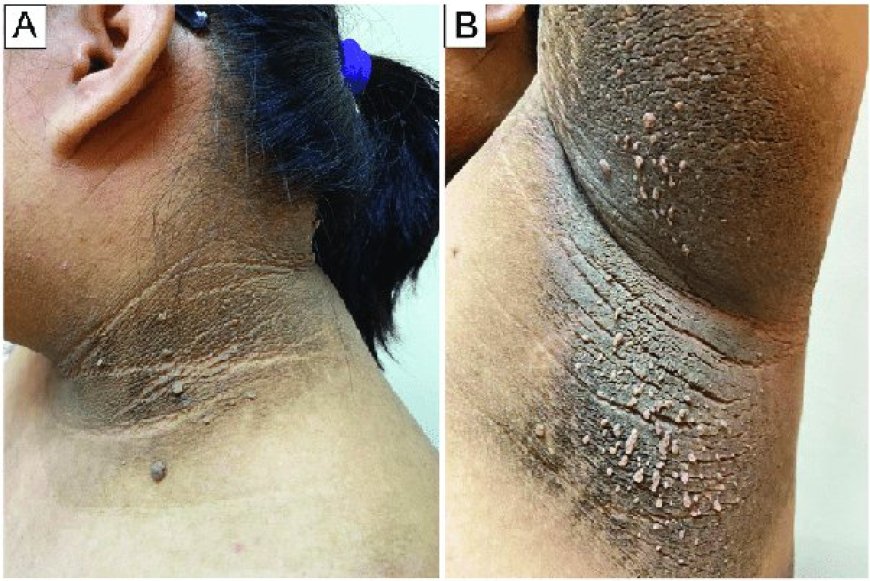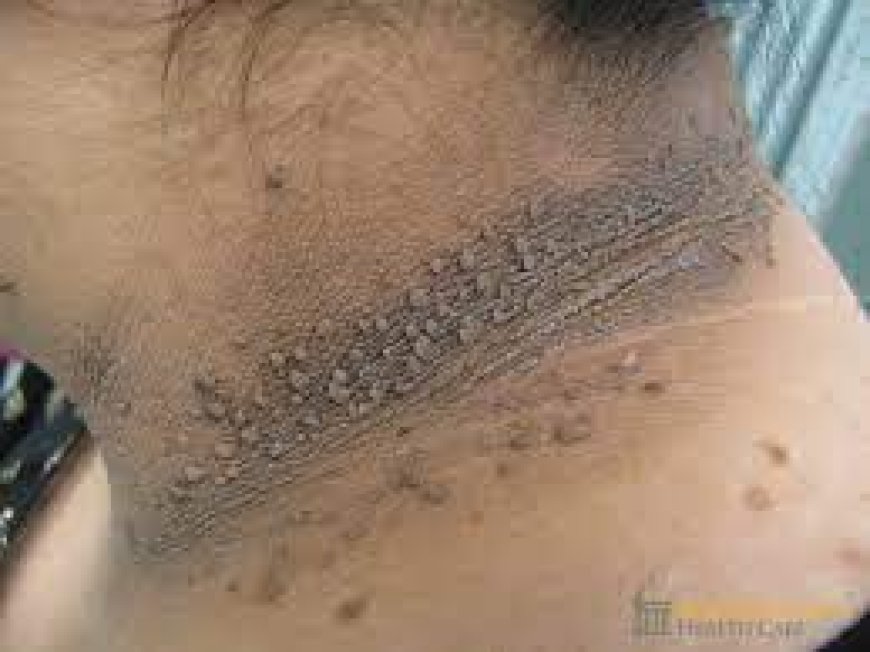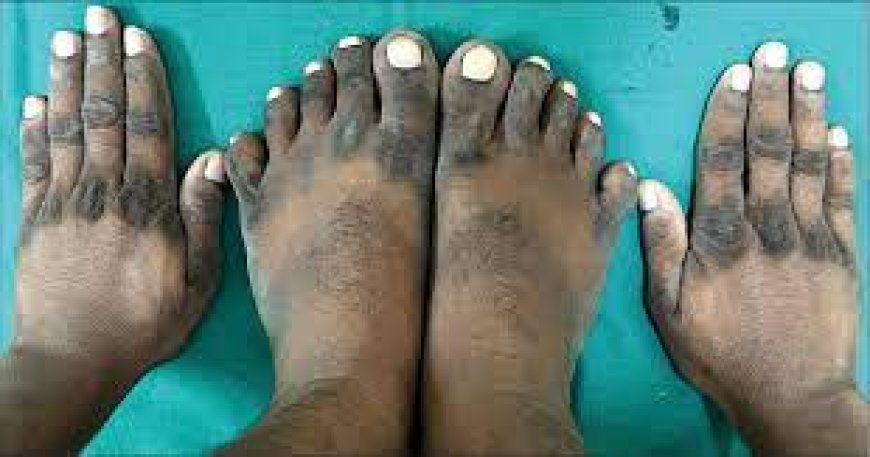"Acanthosis Nigricans And Diabetes: What You Need To Know"
Discover the link between Acanthosis Nigricans and Diabetes, symptoms, treatment, and prevention measures. Stay informed with our comprehensive guide!
Acanthosis nigricans is a skin condition that is characterized by the darkening and thickening of certain areas of the skin. While the condition can affect anyone, it is more common among people with certain underlying health conditions. In this article, we will discuss the symptoms, causes, and treatment options for acanthosis nigricans.
Causes of Acanthosis Nigricans
Acanthosis nigricans is often associated with insulin resistance, a condition in which the body's cells become less responsive to insulin, a hormone that regulates blood sugar levels. Insulin resistance can lead to high levels of insulin in the blood, which can stimulate the growth of skin cells and cause the characteristic darkening and thickening of the skin.
Other underlying health conditions that may contribute to the development of acanthosis nigricans include:
- Obesity: Excess body fat can contribute to insulin resistance, which can in turn cause acanthosis nigricans.
- Polycystic ovary syndrome (PCOS): This condition can cause hormonal imbalances that contribute to insulin resistance and acanthosis nigricans.
- Cushing's syndrome: This rare condition is characterized by high levels of the hormone cortisol, which can cause insulin resistance and acanthosis nigricans.
- Certain medications: Some medications, such as oral contraceptives and corticosteroids, can contribute to the development of acanthosis nigricans.
In some cases, acanthosis nigricans may be inherited.
Symptoms of Acanthosis Nigricans.
Acanthosis nigricans typically affects the skin folds and creases of the body, such as the neck, armpits, groin, and under the breasts. The affected skin may appear darker and thicker than the surrounding skin, and it may feel velvety to the touch. Some people may also experience itching or a burning sensation in the affected areas.
In rare cases, acanthosis nigricans can affect the palms of the hands, the soles of the feet, and other areas of the body.
Risk Factors of Acanthosis Nigricans
While anyone can develop acanthosis nigricans, some people are at higher risk than others. Here are some of the risk factors:
- Obesity: People who are overweight or obese are more likely to develop acanthosis nigricans. This is because excess weight can lead to insulin resistance, which can cause the skin to darken and thicken.
- Family history: Acanthosis nigricans can be hereditary. If someone in your family has the condition, you may be more likely to develop it.
- Race: Acanthosis nigricans is more common in people of African descent, although it can occur in people of any race.
- Age: Acanthosis nigricans is more common in middle-aged and older adults, although it can occur at any age.
- Gender: Acanthosis nigricans is more common in women than in men.
Diagnosis:
The diagnosis of acanthosis nigricans is usually made by a dermatologist or an endocrinologist. The doctor will examine the affected skin and may ask questions about the patient's medical history and family history. They may also perform blood tests to check for insulin resistance, diabetes, and other hormonal disorders. In some cases, a skin biopsy may be performed to confirm the diagnosis.
Treatment for Acanthosis Nigricans
The treatment of acanthosis nigricans depends on the underlying cause of the condition. If the condition is caused by an underlying health condition, such as insulin resistance or PCOS, treating the underlying condition may help to improve the symptoms of acanthosis nigricans.
In some cases, lifestyle changes such as losing weight, improving diet, and increasing exercise can also help to improve insulin resistance and acanthosis nigricans.
- Topical creams: Creams containing retinoids or alpha-hydroxy acids may help reduce the appearance of dark, thick skin patches.
- Oral medications: Medications such as metformin or pioglitazone may help improve insulin resistance and reduce the appearance of acanthosis nigricans.
- Surgery: In rare cases, surgery may be necessary to
Prevention of Acanthosis Nigricans:
There are some measures that can be taken to prevent the development of acanthosis nigricans. Maintaining a healthy weight, exercising regularly, and following a healthy diet can help prevent insulin resistance, which is one of the leading causes of this condition. Avoiding medications that can cause acanthosis nigricans or talking to a doctor about alternative medications is also advisable. It is also important to manage any underlying health conditions, such as diabetes or hormonal disorders.
Living with Acanthosis Nigricans:
Living with acanthosis nigricans can be challenging, both physically and emotionally. The affected skin can be unsightly and cause discomfort. However, there are some steps that can be taken to manage the condition. Using mild soap and moisturizers can help soothe the affected skin. Avoiding tight clothing and excessive sweating can also help. In addition, it is essential to manage any underlying health conditions, such as diabetes or hormonal disorders.
Complications of Acanthosis Nigricans:
While AN itself isn't dangerous, it can be a sign of an underlying health issue, which, if left untreated, can cause complications that affect a person's overall health and well-being. Here are some of the complications associated with AN:
- Increased Risk of Type 2 Diabetes:
AN is often associated with insulin resistance, which is a major risk factor for type 2 diabetes. If left untreated, insulin resistance can lead to high blood sugar levels and eventually develop into type 2 diabetes.
- Skin Infections:
The dark, thick, and moist patches of skin caused by AN can provide an ideal environment for fungal and bacterial infections. These infections can cause itching, redness, and swelling of the affected area, and in some cases, they can spread to other parts of the body.
- Skin Cancer:
In rare cases, AN can be a sign of a type of skin cancer known as Malignant Acanthosis Nigricans (
- Emotional and Psychological Effects:
AN can be a source of embarrassment and anxiety for many people, especially if the patches are visible in areas such as the neck and face. This can lead to a lack of confidence and self-esteem, which can affect a person's social and emotional well-being.
Acanthosis nigricans is a skin condition that is often associated with insulin resistance and other underlying health conditions. While it is not a dangerous or life-threatening condition, it can be a sign of an underlying health condition that requires medical attention. Treatment options include lifestyle changes, topical treatments, and in severe cases, laser therapy or chemical peels.
If you are concerned about your skin's appearance or have other health concerns, it is important to talk to your healthcare provider. They can provide a diagnosis and recommend the appropriate treatment.
What's Your Reaction?













































